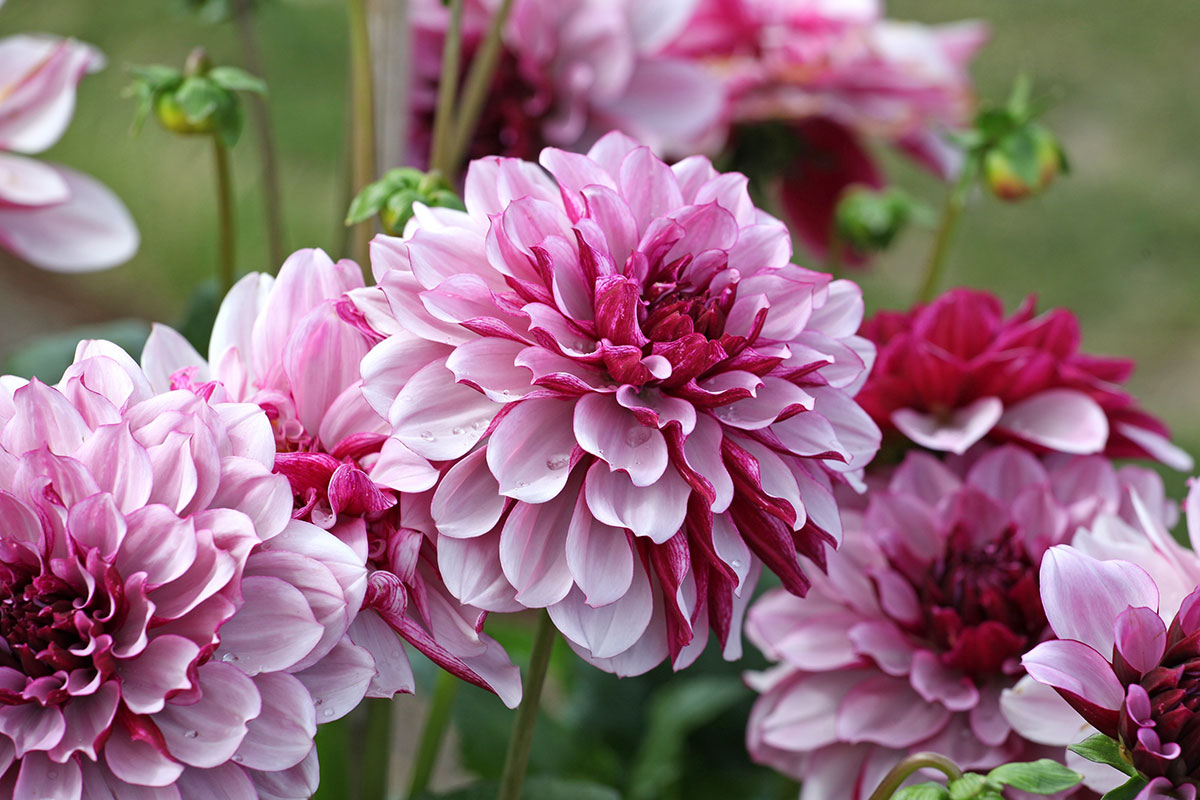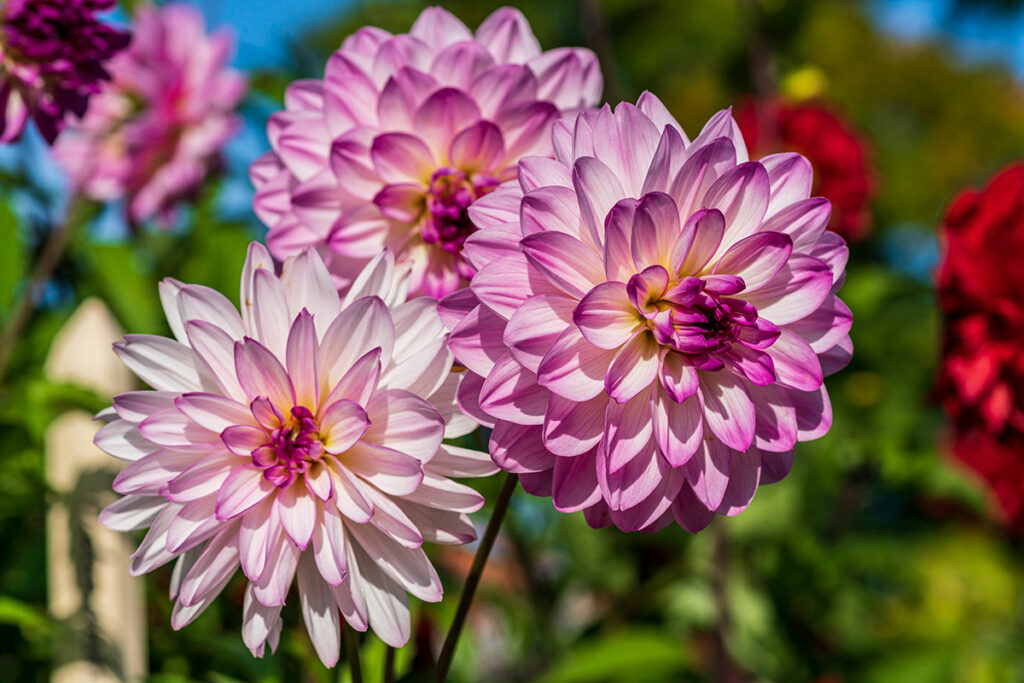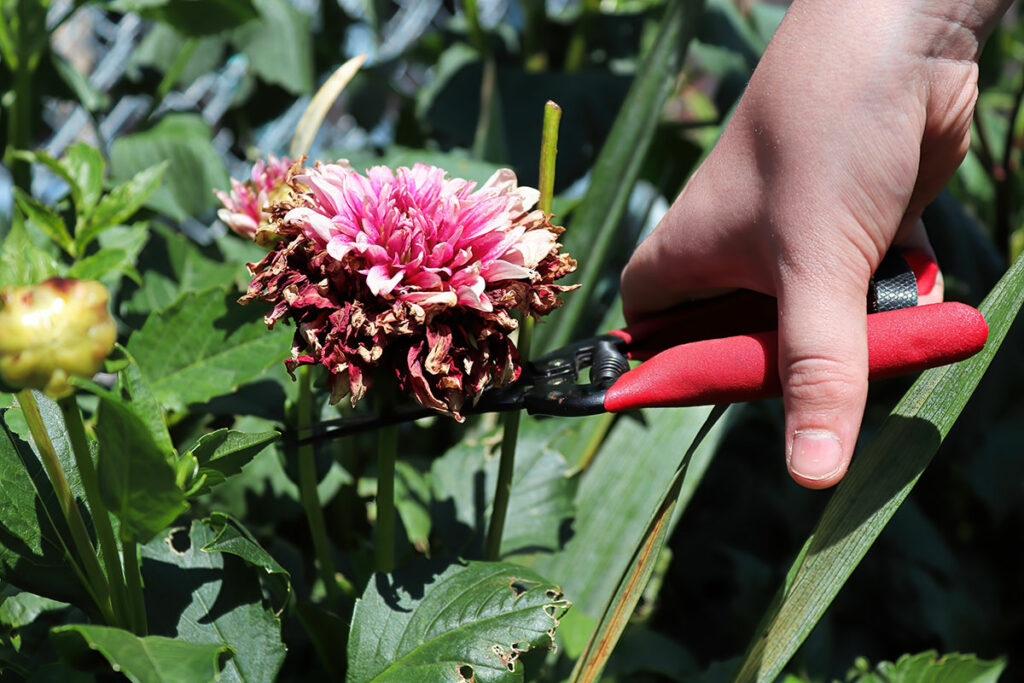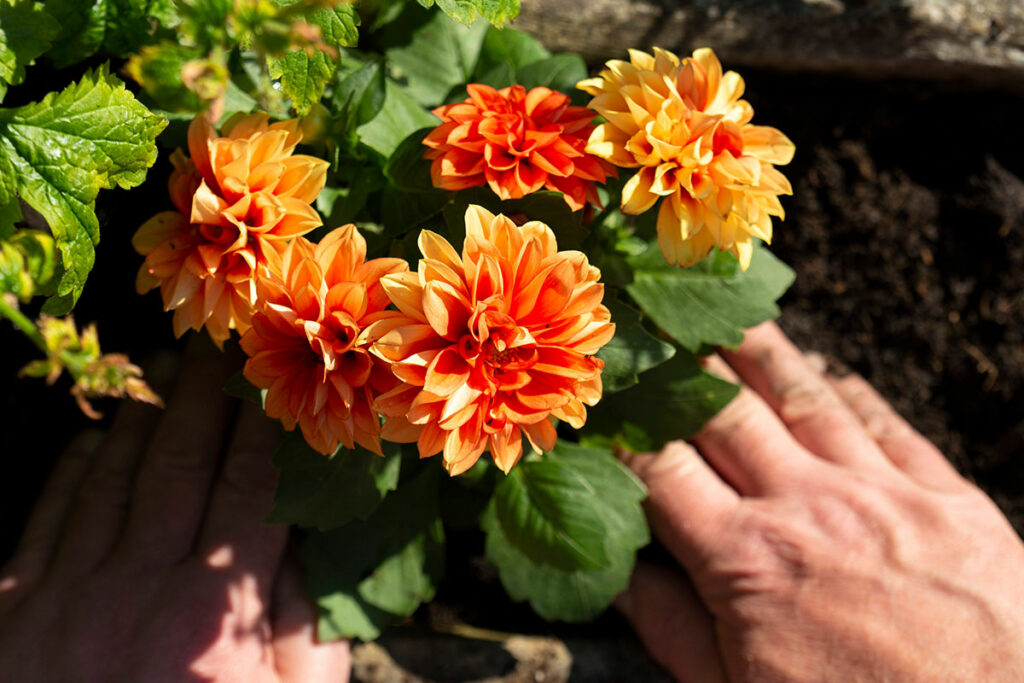
Dahlias are grown for their ability to produce an abundance of large, vibrantly colored blooms.
In fact, a healthy dahlia plant can produce up to 20 or so flowers in one season.
So it is only natural to become concerned when your dahlia stops blooming.
Thankfully, you don’t have to just deal with a non-blooming dahlia. There are several things that you can do to help encourage your dahlia plant to produce an abundance of stunning flowers.
Give The Dahlias Full Sun
Dahlias need an abundance of sunlight in order to produce their stunning blooms. Aim to provide the plant with at least 6 hours of sun every day.
Allowing the plant to grow in a shaded area will prevent blooms from forming.
However, that doesn’t mean you should subject the dahlia to direct sunlight at all times.

Direct light from the afternoon sun is much too harsh for this plant. Direct morning sunlight is safe enough for dahlias, but any direct sun in the afternoon will have to be filtered or dappled for it to safely shine on dahlias.
Perfect Dahlias Watering Requirements
Most people are well aware that water is necessary for plants to be healthy and happy. But did you know that one of the first things that can stop your dahlias from blooming is dehydration?
Without the proper amount of water, the plant will become stressed, and a stressed dahlia will stop blooming.
On average, dahlias need 1 inch of rainfall a week. Sticking your finger about 1 inch into the soil can help determine whether or not the plant needs water. If the top inch of soil feels dry, water the plant deeply.
If, however, the top inch of soil still feels moist, wait a day or two before checking again.
Free Up Those Vital Resources By Removing Spent Blooms

Dahlias are known for being prolific bloomers. The downside to an abundance of blooms means that any spent flower left on the plant will continue to eat up resources even after it is done blooming.
This means dead blooms are using vital resources that the dahlia could use to produce new buds.
That is why it is important to prune off any and all spent blooms.
As the bloom begins to wilt and fade, pinch it off the plant and then either trash or compost the spent blooms.
Too Much Nitrogen May Be To Blame
Nitrogen is great when you want to produce healthy and strong leaves and stems, but it can actually impede the production of blooms.
Apply a fertilizer to the dahlia that has a low nitrogen and higher phosphorus content to help promote bloom production. Phosphorus not only promotes flowering, but it also encourages root growth.
That doesn’t mean, however, that dahlias don’t need nitrogen. It just means that nitrogen is vital at the very beginning of the growing season.
A balanced liquid fertilizer should be applied in early spring until the first bud appears. Once the first bud has emerged, switch to a feed that has a low nitrogen content.
Plant Dahlias At The Right Time

Dahalia tubers should always be planted in late spring once soil temperatures reach above 50 degrees. At this time and temperature, the dahlia tubers will be able to produce new shoots that grow and sprout. Planting the tubers before or after this period could delay bloom production or stop the plant from blooming all together.
Keep An Eye On Powdery Mildew
Powdery mildew is, unfortunately, a common issue that can impact the dahalia’s ability to produce blooms. While it isn’t typically fatal to the plant, it does interfere with the plant’s ability to grow strong and healthy.
Powdery mildew is a fungal disease that occurs when conditions are high levels of humidity, excessive moisture, and poor air circulation.
The most common symptom of powdery mildew is a white, powdery-like substance appearing on the leaves of the infected plant.
Treating the plant with either neem oil, a homemade baking soda solution, or other fungicide will help get rid of the powdery mildew.





 ?. ts.dhung.
?. ts.dhung.